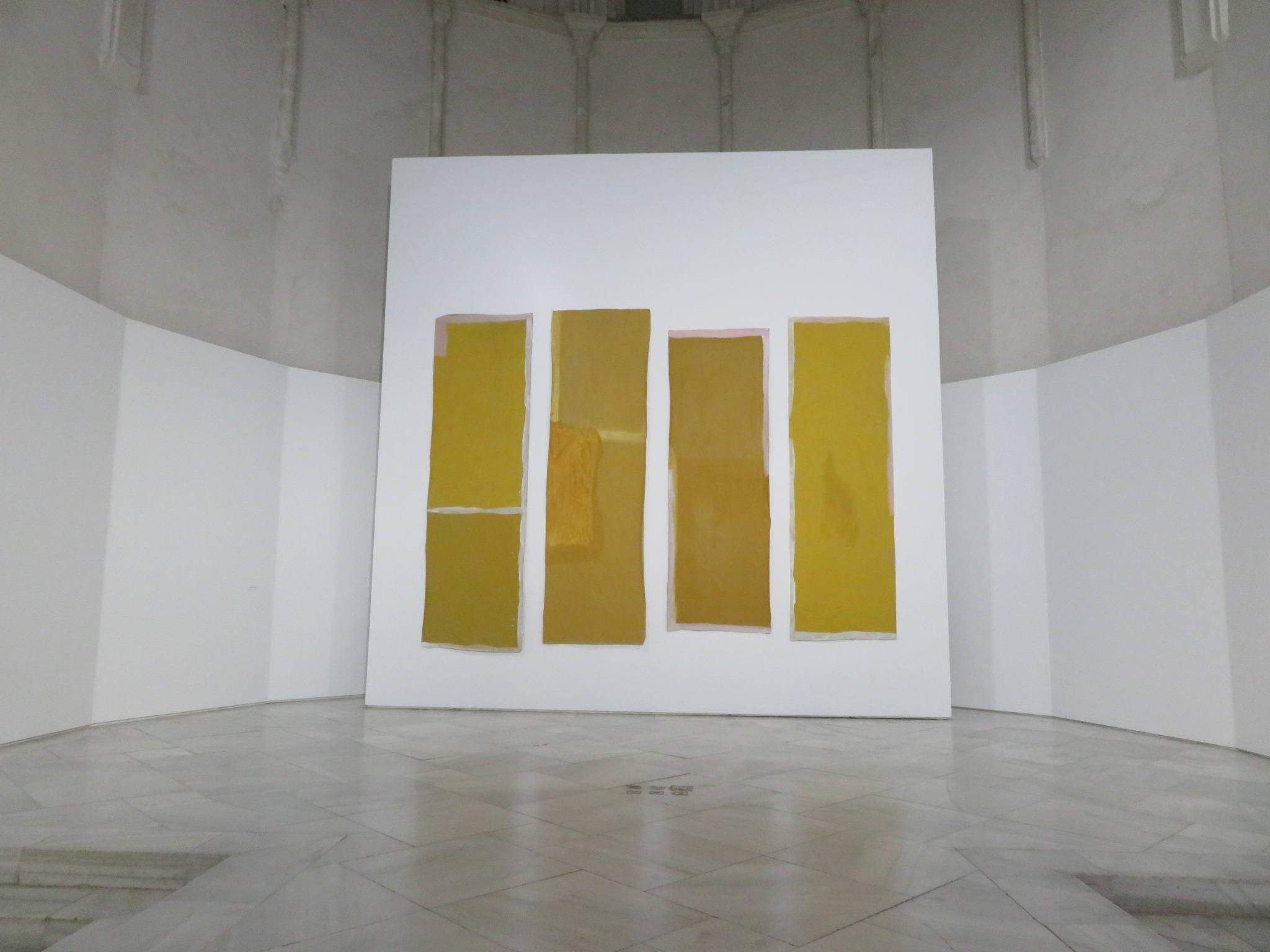In the beautiful old monastery ‘La Cartuja’, close to the expo terrain of ’92, you will find the museum of contemporary art. If you are a lover of art, this museum should be on your list when visiting Seville. A ticket is only 3 euros and don’t forget the museum is closed on Mondays! Check their opening hours and address here! The museum is also perfectly accessible for people with disabilities.
The history of the museum
The contemporary art museum used to be a monastery called ‘La Cartuja’. In the mid-19th century, many monasteries were sold and Charles Pickman, an English businessman purchased it and converted it into an internationally renowned pottery factory. When entering the terrain, you will immediately see the outer chapel on your right hand. In 1990 the museum was opened to give the locals an institution for the research, conservation,and promotion of contemporary art.
What can you see here?  When visiting the museum, don’t expect old and dusty art from historic events that happened centuries ago. In this museum, you will see a permanent collection, but there are also temporary exhibitions that vary from time to time. On their website you can check which temporary exhibitions are currently going on. Currently, there is a very special exhibition called ‘Us Girls, Again’ that you can visit about the gender issues in the world of art and how the museum implemented a gender-balanced Programme of both exhibitions and acquisitions. Another interesting exhibition (that ends in February 2020) is from Rosalind Nashashibi in collaboration with IKEA. Her film work establishes the relationship between places and the people who interact in them. She has a very interesting way of filming, using a distinctive grainy look and cadence.
When visiting the museum, don’t expect old and dusty art from historic events that happened centuries ago. In this museum, you will see a permanent collection, but there are also temporary exhibitions that vary from time to time. On their website you can check which temporary exhibitions are currently going on. Currently, there is a very special exhibition called ‘Us Girls, Again’ that you can visit about the gender issues in the world of art and how the museum implemented a gender-balanced Programme of both exhibitions and acquisitions. Another interesting exhibition (that ends in February 2020) is from Rosalind Nashashibi in collaboration with IKEA. Her film work establishes the relationship between places and the people who interact in them. She has a very interesting way of filming, using a distinctive grainy look and cadence.
The permanent collection dates from 1957 and focuses particularly on the history of contemporary Andalusian creativity and its relationship with other national and international artistic contexts. The permanent collection includes pieces by Luis Gordillo, Candida Hofer Rebecca Horn and many other artists.

But don’t forget to walk around the building as well and wander around in the beautiful gardens. It often very quiet here which makes it a very calm place. Visitors may also see the historical grounds of the former monastery which includes the chapels, the church, and the priory cell.